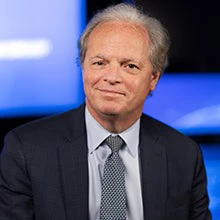
How can we help the poorest countries deal with climate change? The challenge is huge. Globally, the last three years were the hottest on record. Emissions of carbon dioxide from fossil fuels and industry started rising again in 2017 after briefly leveling off. Many regions are experiencing more severe and frequent storms, floods, and drought. According to the latest Intergovernmental Panel on Climate Change report, the climate consequences of a 2°C warmer world are far greater than for a rise of 1.5°C, and we are not on track for either.
Recognizing the urgent need for more action, the World Bank Group announced new and ambitious targets for our climate work with developing countries at COP24 , this month’s global climate change conference in Katowice, Poland. Having recently exceeded our 2020 financing targets two years ahead of schedule, we are aiming to double our investments to $200 billion over the five years from 2021 to 2025. The Bank Group is also making adaptation and resilience a top priority, since millions of people are already dealing with the severe consequences of more extreme weather events. By ramping up direct adaptation finance to around $50 billion over FY21-25, the World Bank will now give it equal emphasis to investments that reduce emissions.
As the World Bank arm that provides financing to the poorest countries, the International Development Association (IDA) will be critical to meeting these goals. Many of IDA’s client countries are on the front lines of climate change, with their poorest and most vulnerable people facing many of the greatest risks. And the numbers are large: with climate shifting the location of productive agricultural land, South Asia could have 40 million internal climate migrants by 2050, while Africa could have upwards of 86 million.
Given the urgency and the enormous demand for financing—an estimated $1 trillion will be needed in the poorest countries to meet climate commitments by 2030 —IDA will need to play a bigger role. We have stepped up our focus on climate with IDA18, our current three-year funding cycle which recently passed its midpoint. We are setting our sights on the Bank Group’s new targets, and we will be using them to drive more progress on climate for our clients.
With donor partners’ strong support, IDA is helping integrate climate into policy reforms and development planning, so that countries can reduce their carbon emissions and become more resilient and climate smart. For example, Forest Policy Notes are shaping dialogue among governments and development partners as well as identifying new engagements and project designs in the Democratic Republic of Congo, Ethiopia, Liberia, Mozambique, and Nepal. In Bangladesh, a Climate Smart Agriculture Investment Plan is helping ensure high-level coordination among government ministries.
On the ground, IDA projects are helping people become climate smart in their agriculture and land use. In Burundi, our Landscape Restoration and Resilience Project is enabling farmer groups to protect topsoil, recover soil fertility, and begin year-round production of nutrient-rich foods. The farmers are now able to access seeds and seedlings for a wider range of food and fodder crops, as well as trees and soil-stabilizing grasses to protect their land. In Ethiopia’s Oromia region, our BioCarbon Fund Initiative for Sustainable Forest Landscapes is helping more women register land and become coffee farmers while also introducing climate-smart practices that boost productivity.
The innovative instruments and special funding windows that we have set up under IDA18 are driving transformative climate actions for resilience and low-carbon growth. We are using a combination of country-level and regional approaches, especially in Africa, which now has the majority of IDA’s client countries. In Nigeria, for example, the IDA Scale-up Facility is providing support for a holistic approach to erosion and watershed management. Across West Africa, IDA Regional Program financing is mobilizing private capital for solar parks, preparing for large-scale solar electricity generation and strengthening technical capacity as part of our Africa Climate Business Plan.
IDA18 is helping expand renewable energy across client countries, both to combat climate change and to improve energy access for the poor. Between July 2017 and September 2018, IDA helped client countries mobilize financing for an additional 6.0 gigawatts of renewable energy generation, exceeding the target of 5 GW. Through development policy lending, IDA is enabling countries like Rwanda to incorporate renewable energy generation into national strategies. And through its new Private Sector Window, IDA has set up a $50 million risk sharing facility to help scale up renewable energy across the Pacific Islands. To crowd in more private capital for renewables, IDA18 is helping seven African countries prepare investment prospectuses. These are complete for Cameroon and Côte d’Ivoire and underway in Benin, Kenya, Madagascar, Malawi, Niger, and Togo.
IDA’s support will also be critical to helping countries meet their objectives under the Paris climate agreement as well as the climate-related Sustainable Development Goals. We’re integrating climate objectives into our diagnostics and Country Partnership Frameworks for each IDA country, so that our projects and initiatives take climate concerns into account. Addressing the threat posed by climate change is a crucial foundation as we partner to end extreme poverty and broaden prosperity in the poorest countries.


Join the Conversation